Proteases
Proteases is a general term for a class of enzymes that hydrolyze protein peptide chains. According to the way they degrade polypeptides, they are divided into two categories: endopeptidases and telopeptidases. The former can cut the large molecular weight polypeptide chain from the middle to form prions and peptones with smaller molecular weights; the latter can be divided into carboxypeptidase and aminopeptidase, which respectively remove the peptide from the free carboxyl terminus or free amino terminus of the polypeptide one by one. Chain hydrolysis produces amino acids.
A general term for a class of enzymes that hydrolyze peptide bonds in proteins. According to the way they hydrolyze polypeptides, they can be divided into endopeptidases and exopeptidases. Endopeptidase cleaves the interior of the protein molecule to form smaller molecular weight peptones and peptones. Exopeptidase hydrolyzes peptide bonds one by one from the end of the free amino group or carboxyl group of protein molecules, and frees amino acids, the former is aminopeptidase and the latter is carboxypeptidase. Proteases can be classified into serine proteases, sulfhydryl proteases, metalloproteases and aspartic proteases according to their active centers and optimum pH. According to the optimum pH value of its reaction, it is divided into acidic protease, neutral protease and alkaline protease. The proteases used in industrial production are mainly endopeptidases.
Proteases are widely found in animal offal, plant stems and leaves, fruits and microorganisms. Microbial proteases are mainly produced by molds and bacteria, followed by yeast and actinomycetes.
Enzymes that catalyze the hydrolysis of proteins. There are many kinds, the important ones are pepsin, trypsin, cathepsin, papain and subtilisin. Proteases have strict selectivity for the reaction substrates they act on. A protease can only act on certain peptide bonds in protein molecules, such as the peptide bonds formed by the hydrolysis of basic amino acids catalyzed by trypsin. Proteases are widely distributed, mainly in the digestive tract of humans and animals, and are abundant in plants and microorganisms. Due to limited animal and plant resources, the industrial production of protease preparations is mainly prepared by fermentation of microorganisms such as Bacillus subtilis and Aspergillus terrestris.
Targets for Proteases
- Caspase(88)
- Aminopeptidase(19)
- ACE(69)
- Calpains(11)
- Carboxypeptidase(8)
- Cathepsin(68)
- DPP-4(18)
- Elastase(23)
- Gamma Secretase(46)
- HCV Protease(35)
- HSP(95)
- HIV Integrase(29)
- HIV Protease(32)
- MMP(199)
- NS3/4a protease(4)
- Serine Protease(11)
- Thrombin(46)
- Urokinase(2)
- Cysteine Protease(0)
- Other Proteases(15)
- Tyrosinases(44)
- 15-PGDH(1)
- Acetyl-CoA Carboxylase(13)
- Acyltransferase(53)
- Aldehyde Dehydrogenase (ALDH)(27)
- Aminoacyl-tRNA Synthetase(9)
- ATGL(1)
- Dipeptidyl Peptidase(47)
- Drug Metabolite(453)
- E1/E2/E3 Enzyme(82)
- Endogenous Metabolite(1555)
- FABP(30)
- Farnesyl Transferase(21)
- Glutaminase(14)
- Glutathione Peroxidase(14)
- Isocitrate Dehydrogenase (IDH)(26)
- Lactate Dehydrogenase(17)
- Lipoxygenase(231)
- Mitochondrial Metabolism(201)
- NEDD8-activating Enzyme(6)
- Neprilysin(12)
- PAI-1(12)
- Ser/Thr Protease(40)
- Tryptophan Hydroxylase(11)
- Xanthine Oxidase(16)
- MALT1(10)
- PCSK9(1)
Products for Proteases
- Cat.No. Nom du produit Informations
-
GC16812
3-Methylglutaric acid
NSC 14870
L'acide 3-méthylglutarique, un métabolite de la leucine, est un acide organique dicarboxylique en C6 visible classiquement associé À deux déficiences enzymatiques distinctes de la voie de la leucine, la 3-hydroxy-3-méthylglutaryl CoA lyase (HMGCL) et la 3-méthylglutaconyl CoA hydratase (AUH) .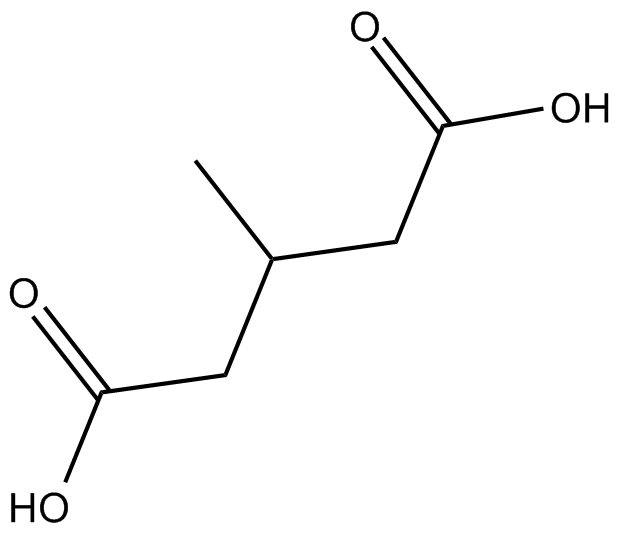
-
GC62795
3-Methylhistamine dihydrochloride
Le dichlorhydrate de 3-méthylhistamine est un produit de dégradation de l'histamine.
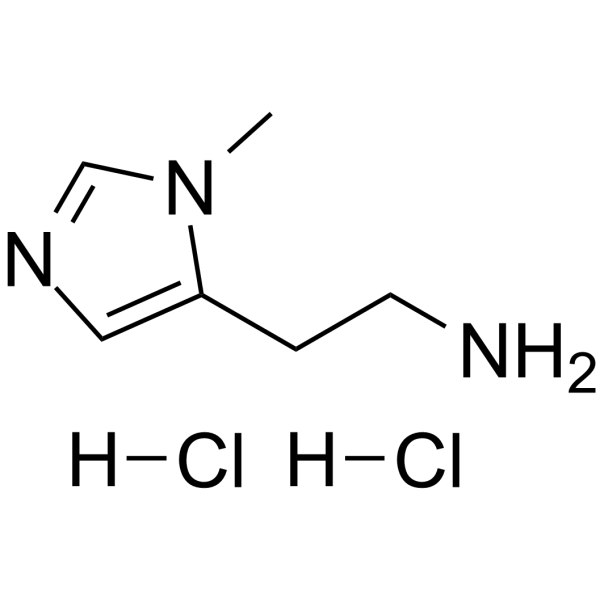
-
GC38297
3-Methylindolin-2-one
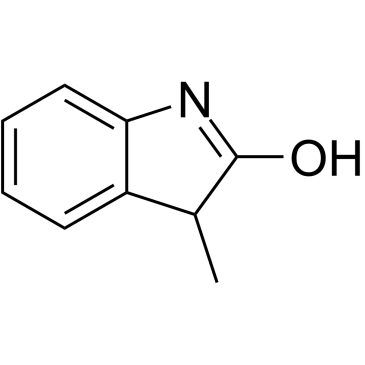
-
GC33525
3-Methyluridine
La 3-méthyluridine (N3-méthyluridine) est un nucléoside À ARN modifié.
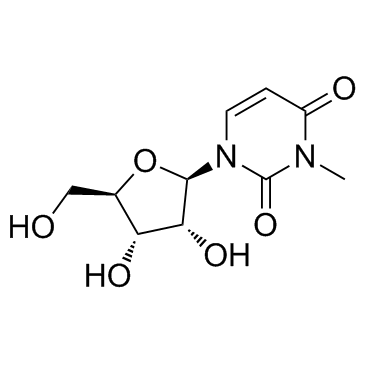
-
GC62796
3-Methylvaleric Acid
L'acide 3-méthylvalérique est un ingrédient aromatisant.
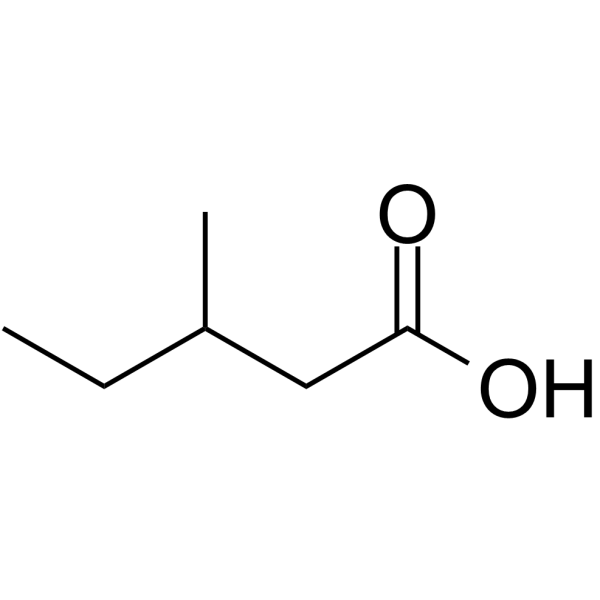
-
GC30635
3-Methylxanthine
3-MTX, 3-MX, NSC 515466
La 3-méthylxanthine, un dérivé de la xanthine, est un inhibiteur cyclique de la guanosine monophosphate (GMP), avec une IC50 de 920 μM sur le muscle trachéal isolé de cobaye.
-
GC64078
3-O-Acetyl-11-hydroxy-beta-boswellic acid
L'acide 3-O-acétyl-11-hydroxy-bêta-boswellique est un puissant inhibiteur de la 5-lipoxygénase (5-LO).
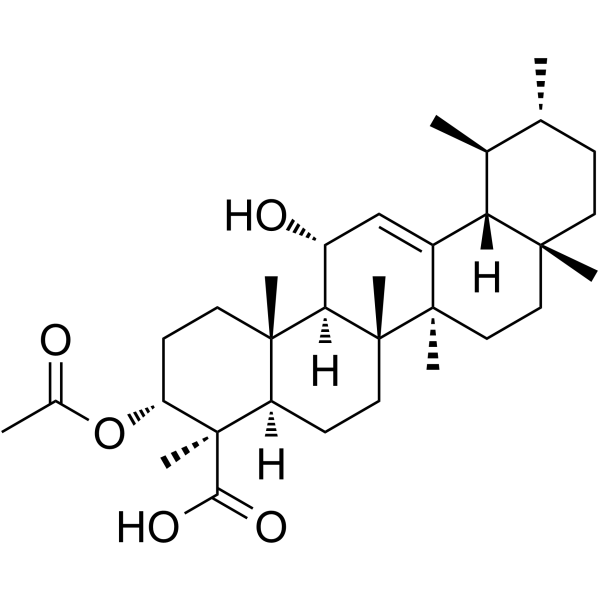
-
GC61717
3-O-Ethyl-L-ascorbic acid
3-EtAA, 3-O-Ethylascorbic Acid
L'acide 3-O-Ethyl-L-ascorbique, dérivé stable de la vitamine C, est un inhibiteur cosmétique de la tyrosinase au pouvoir blanchissant.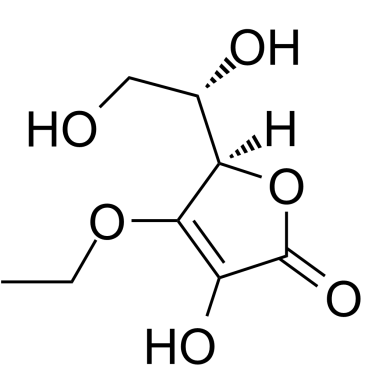
-
GC42307
3-O-methyl-L-DOPA (hydrate)
3-O-methyl-3,4-Dihydroxyphenylalanine, 3-methoxy DOPA, 3-OMD
3-O-methyl-L-DOPA is a metabolite of L-DOPA, produced by the activity of catechol O-methyltransferase.
-
GC60505
3-O-Methyldopa
La 3-O-méthyldopa (3-méthoxy-L-tyrosine) est un métabolite de la L-DOPA qui est formé par la catéchol-O-méthyltransférase (COMT).
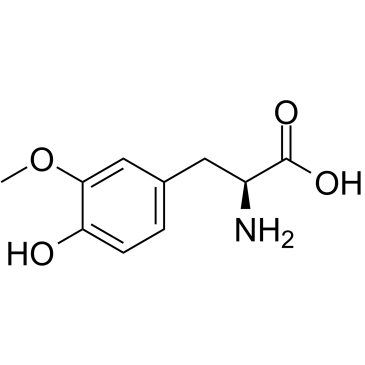
-
GC60506
3-O-Methyldopa D3
La 3-O-méthyldopa D3 (3-méthoxy-L-tyrosine-d3) est la 3-O-méthyldopa marquée au deutérium.
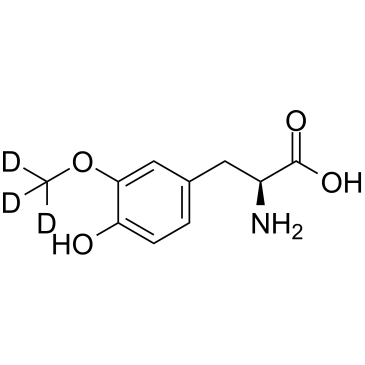
-
GC62797
3-Oxo-4,6-choladien-24-oic acid
L'acide 3-oxo-4,6-choladien-24-oÏque est un métabolite endogène.
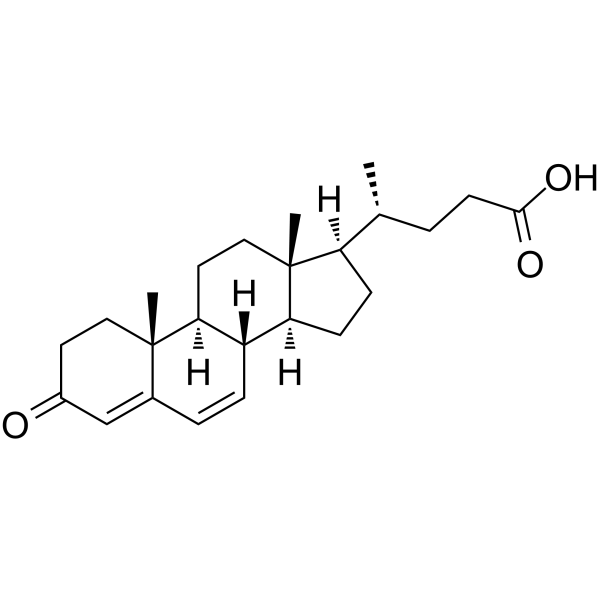
-
GC64220
3-Oxo-7-hydroxychol-4-enoic acid
L'acide 3-oxo-7-hydroxychol-4-énoÏque est un métabolite endogène.
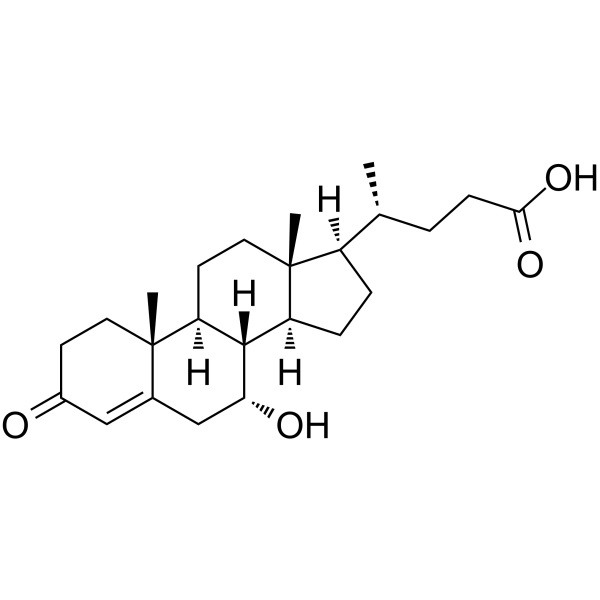
-
GC45339
3-Oxocholic Acid
3-Dehydrocholic Acid
L'acide 3-oxocholique est un métabolite de l'acide oxo-biliaire et également un produit de dégradation majeur de l'acide cholique par C.
-
GC30353
3-Oxopentanedioic acid
L'acide 3-oxopentanedioÏque est un acide dicarboxylique simple, qui est bien connu pour être utilisé dans la synthèse des tropinones.
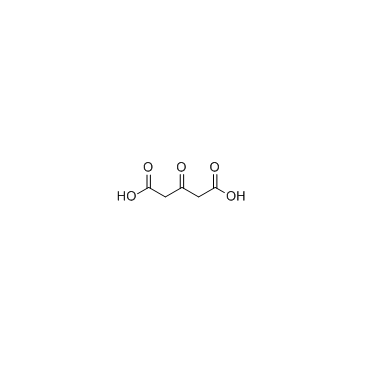
-
GC62798
3-Phenylbutyric acid
L'acide 3-phénylbutyrique est métabolisé par oxydation initiale du noyau benzénique et par oxydation initiale de la chaÎne latérale.
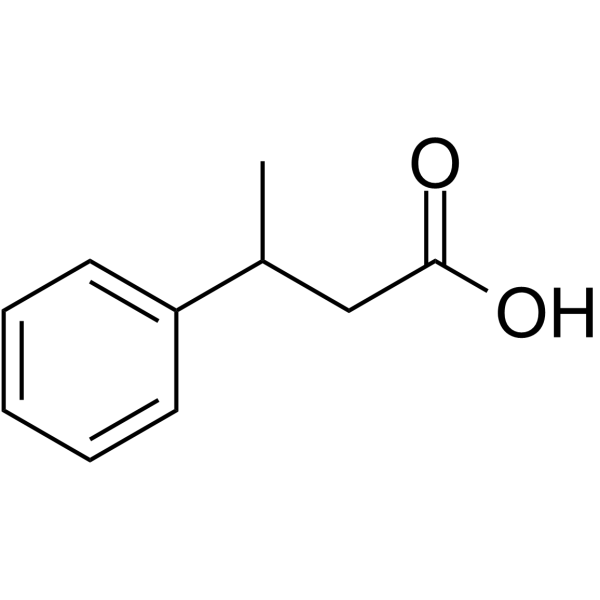
-
GC61582
3-Phenyltoxoflavin
La 3-phényltoxoflavine, un dérivé de la toxoflavine, est un inhibiteur de Hsp90, avec un Kd de 585 nM pour l'interaction Hsp90-TPR2A. La 3-phényltoxoflavine a une activité anticancéreuse.
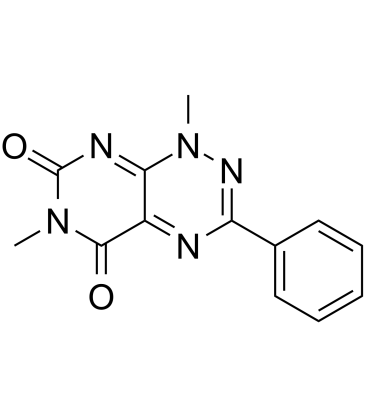
-
GC33604
3-Pyridineacetic acid
L'acide 3-pyridineacétique est un homologue supérieur de l'acide nicotinique, un produit de dégradation de la nicotine (et d'autres alcaloÏdes du tabac).
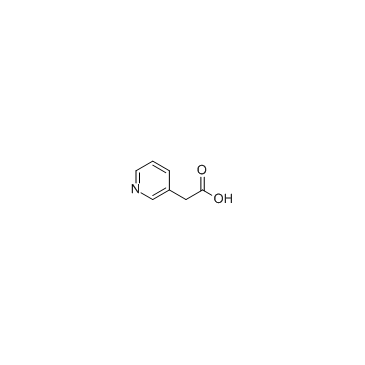
-
GC31553
3b-Hydroxy-5-cholenoic acid
3β-hydroxy-5-Cholenic Acid
L'acide 3b-hydroxy-5-cholénoÏque est un acide biliaire monohydroxy d'origine endogène et pourrait être trouvé chez les enfants atteints du syndrome d'hypoplasie canalaire hépatique.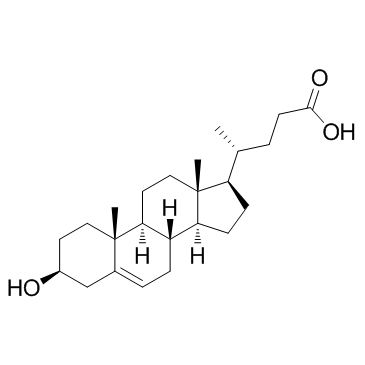
-
GC18817
3β-hydroxy-5-Cholestenoic Acid
3β-hydroxy-5-CA, Cholesterol-26-carboxylic Acid
3β-hydroxy-5-Cholestenoic acid is an active metabolite of cholesterol formed when cholesterol is metabolized by the cytochrome P450 (CYP) isomer CYP27A1.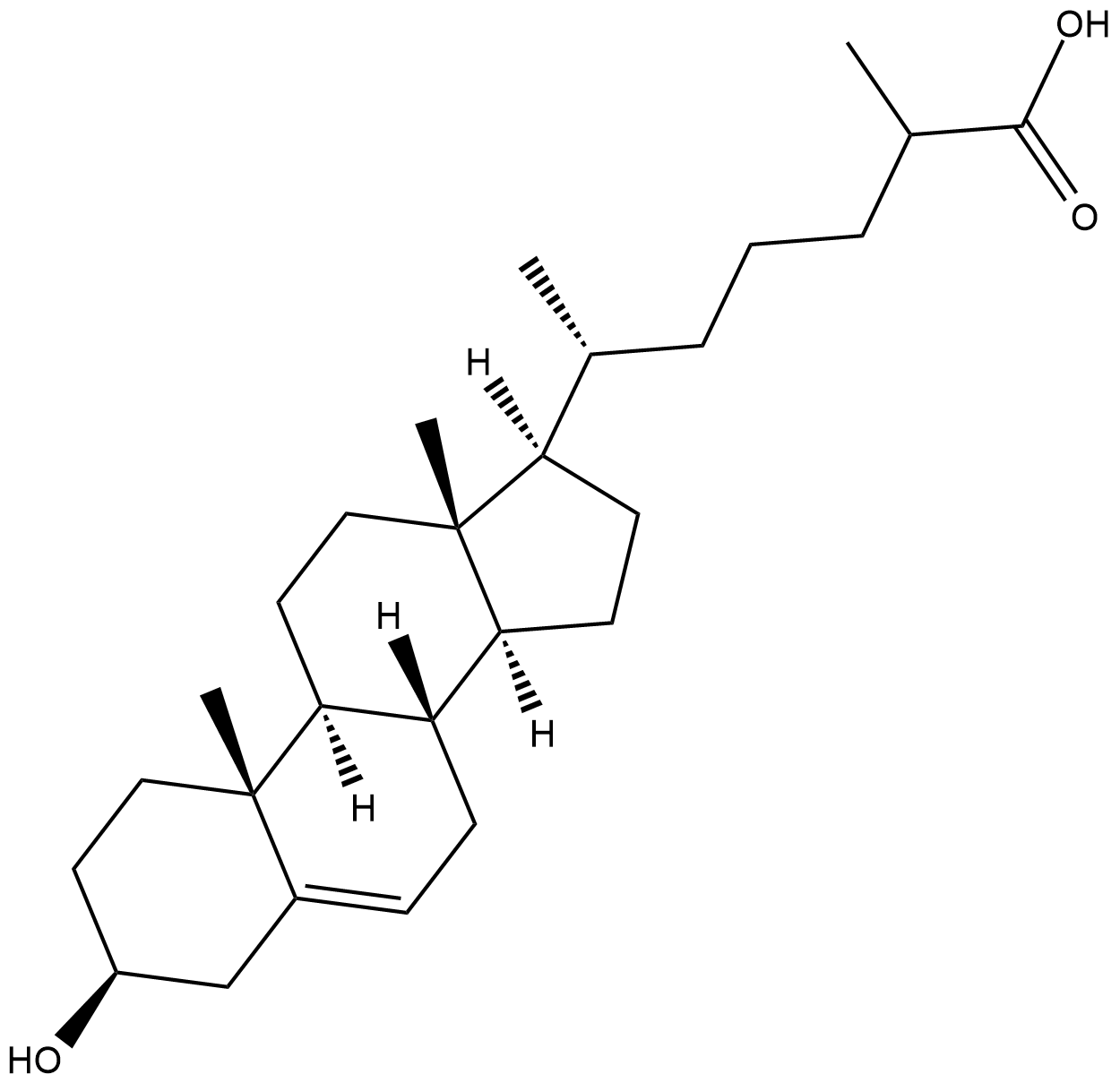
-
GC49367
4’-hydroxy Atomoxetine Glucuronide (hydrate)
A metabolite of atomoxetine

-
GC49252
4’-hydroxy Trazodone
A metabolite of trazodone

-
GC30277
4',5-Dihydroxyflavone
La 4',5-dihydroxyflavone est un inhibiteur de la LOX-1 de soja et de l'α-glucosidase de levure, avec un Ki de 102,6 μM pour la LOX-1 de soja et une CI50 de 66 μM pour l'α-glucosidase de levure.
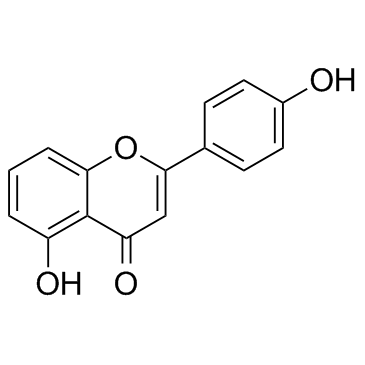
-
GC33976
4',7-Dimethoxyisoflavone (Dimethoxydaidzein)
4',7-diméthoxyisoflavone (diméthoxydaidzéine) est isolée des feuilles d'Albizzia lebbeck, qui présente une activité antifongique.
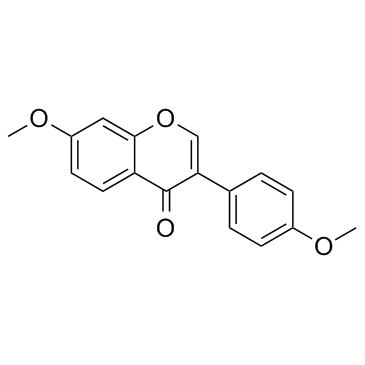
-
GC18527
4'-hydroxy Flurbiprofen
A major active metabolite of flurbiprofen
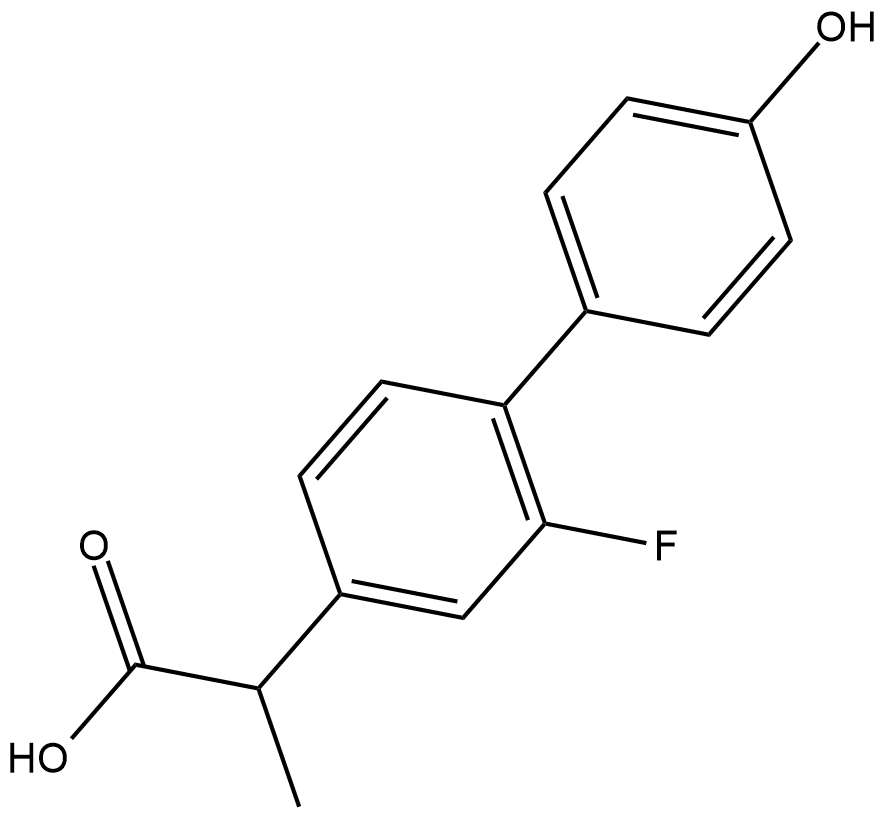
-
GC41003
4'-O-methyl Quercetin
4'-methoxy Quercetin, Tamarixetin
4'-O-methyl Quercetin (4'-O-Methyl Quercetin) est un dérivé flavonoÏde naturel de la quercétine, avec des effets anti-oxydants et anti-inflammatoires.
-
GC62800
4,4’-Disulfanediylbis(2-aminobutanoic acid)
NSC 11337, NSC 43122
4,4’-Disulfanediylbis(acide 2-aminobutanoïque) est un métabolite endogène.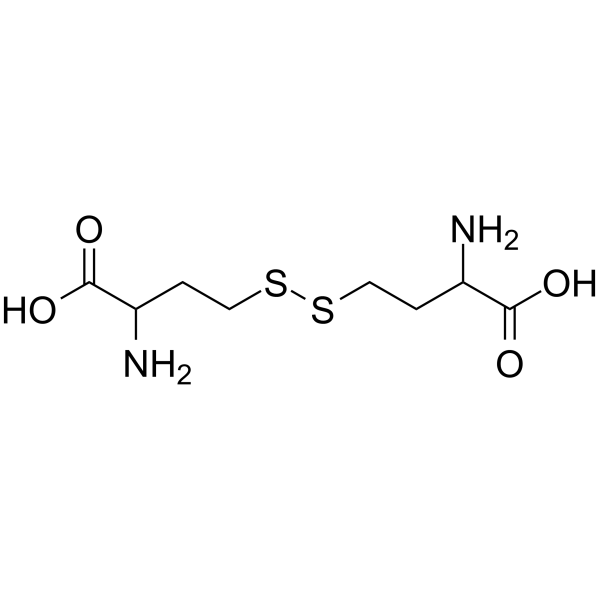
-
GC60510
4,4-Dimethoxy-2-butanone
La 4,4-diméthoxy-2-butanone est un métabolite endogène.
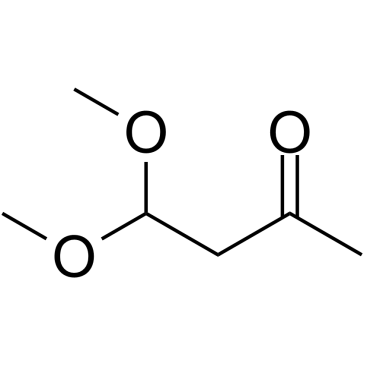
-
GC49752
4,5-Desisopropylidene Topiramate
4,5-Desisopropylidene TPM
An inactive metabolite of topiramate
-
GC32483
4,6-Dioxoheptanoic acid
NSC 174804
L'acide 4,6-dioxoheptanoÏque est un puissant inhibiteur de la biosynthèse de l'hème.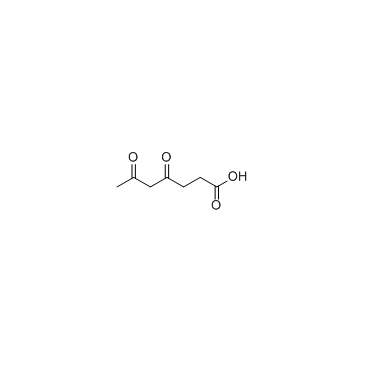
-
GC31640
4-(1,2-Dihydroxyethyl)benzene-1,2-diol
Ba 2775, DHPG, NSC 92532
Le 4-(1,2-dihydroxyéthyl)benzène-1,2-diol, un métabolite normal de la noradrénaline, est associé au syndrome de Menkes.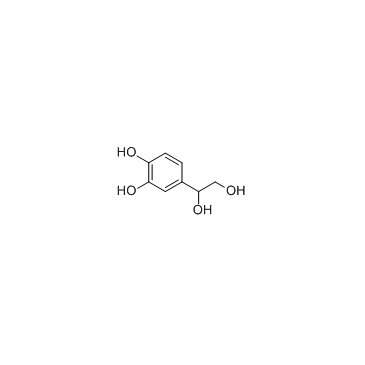
-
GC49337
4-Acetamidobenzenesulfonamide
APAS, N-Acetyl p-Aminobenzene Sulfonamide, N4-Acetyl Sulfanilamide, N-Acetylsulfanilamide, NSC 217, NSC 406839
A metabolite of asulam and sulfanilamide
-
GC33504
4-Acetamidobutanoic acid (N-acetyl GABA)
4-Acetamidobutanoic Acid, N-acetyl-4-Aminobutanoic Acid, N-acetyl-γ-Aminobutyric Acid, NSC 27423
L'acide 4-acétamidobutanoÏque (N-acétyl GABA) (N-acétyl GABA), le principal métabolite du GABA, présente des activités antioxydantes et antibactériennes.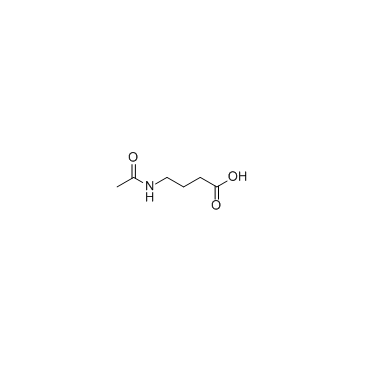
-
GC45341
4-Amino-6-chloro-1,3-benzenedisulfonamide
ACB, Chloraminophenamide, 3-Chloroaniline-4,6-disulfonamide, NSC 93772

-
GC66484
4-Amino-L-phenylalanine hydrochloride
H-Phe(4-NH2)-OH hydrochloride
Le chlorhydrate de 4-amino-L-phénylalanine (H-Phe(4-NH2)-OH) est un métabolite endogène.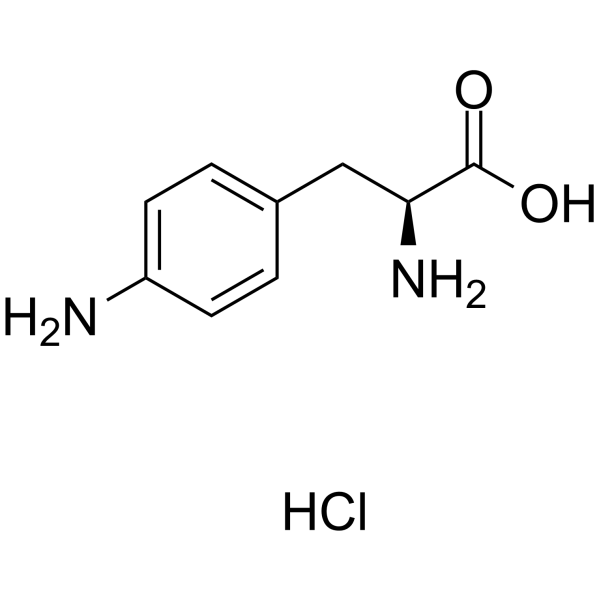
-
GC10996
4-Aminobenzoic acid
L'acide 4-aminobenzoÏque est un intermédiaire dans la synthèse du folate par les bactéries, les plantes et les champignons.
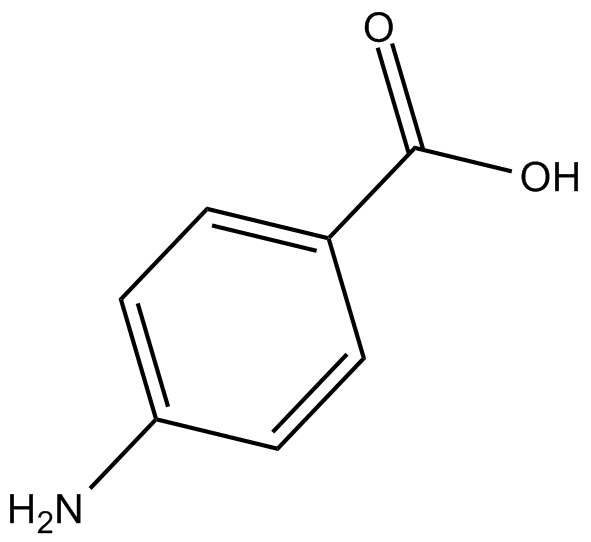
-
GC16443
4-Aminohippuric Acid
p-Aminohippuric Acid, para-Aminohippuric Acid, NSC 7550, NSC 13064
L'acide 4-aminohippurique est un agent de diagnostic, utile dans les tests médicaux impliquant le rein, utilisé dans la mesure du débit plasmatique rénal.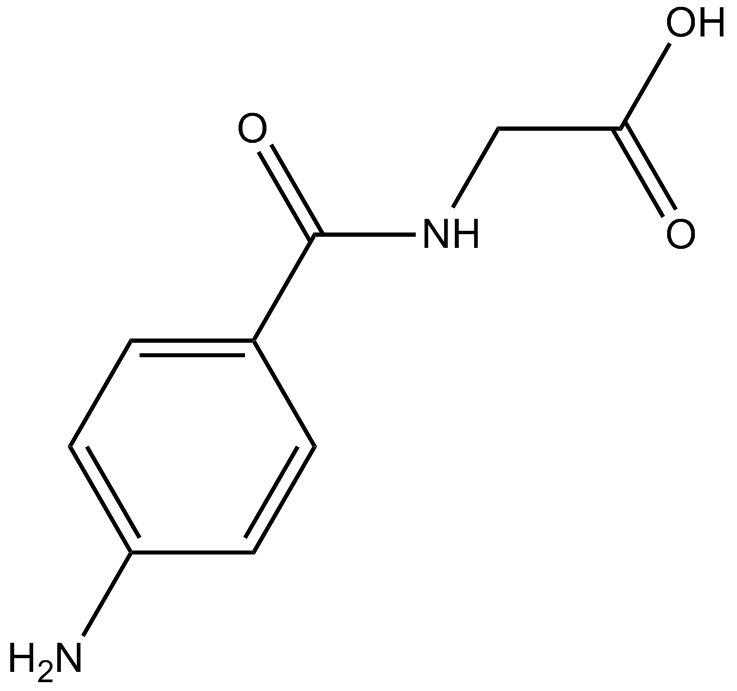
-
GC39473
4-Bromo-3-hydroxybenzoic acid
L'acide 4-bromo-3-hydroxybenzoÏque est un métabolite de la brocrésine et un inhibiteur de l'histidine décarboxylase (HDC) avec des CI50 de 1 mM pour les HDC fœtales et gastriques de rat.
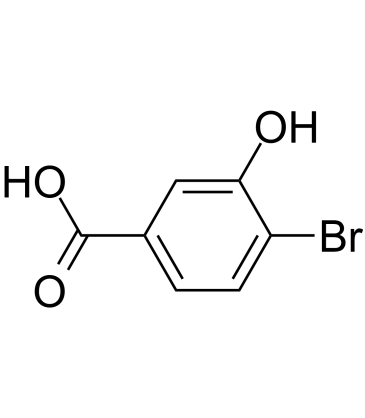
-
GC30513
4-Butylresorcinol (Butylresorcinol)
Le 4-butylrésorcinol (butylrésorcinol) est un dérivé du phénol qui peut inhiber la tyrosinase avec une CI50 de 11,27 μM.
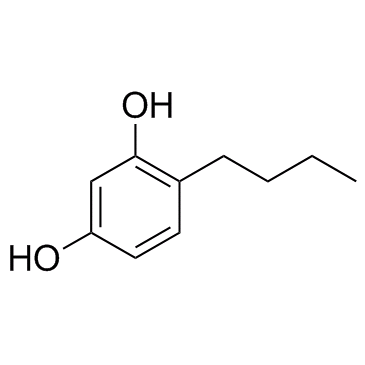
-
GC42351
4-carboxy TEMPO
4-Carboxyl-2,2,6,6-tetramethylpiperidin-1-oxyl
4-carboxy TEMPO is a nitroxide and spin label.
-
GC60512
4-Carboxypyrazole
Le 4-carboxypyrazole est un métabolite endogène.
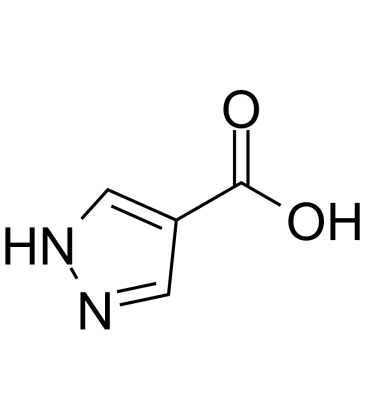
-
GC49722
4-CF3-TPP-DC
4-CF3-Triphenylphosphonium-DC
An inert mitochondriotropic carrier
-
GC13337
4-Chlorophenylguanidine hydrochloride
Urokinase inhibitor, potent and specific
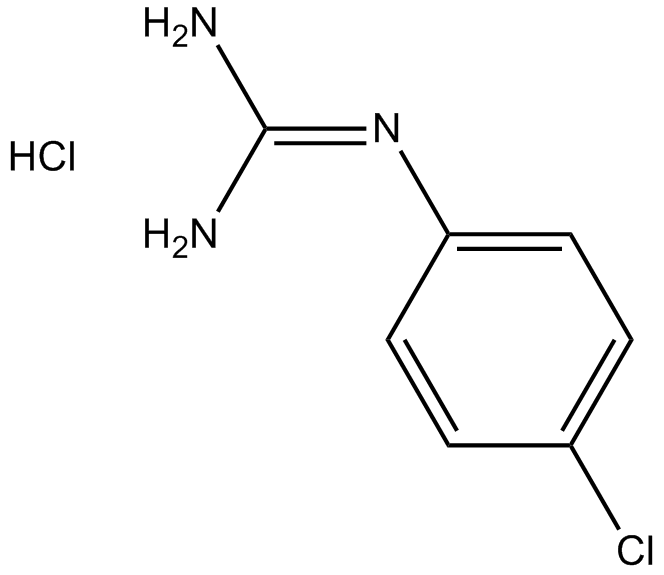
-
GC42370
4-desmethoxy Omeprazole
4-desmethoxy OMEP, 4-desmethoxy OMP, 4-desmethoxy OMZ, Esomeprazol Magnesium Impurity B, Omeprazole EP Impurity B
Le 4-desméthoxy oméprazole est le métabolite actif de l'oméprazole.
-
GC39245
4-Diethylaminobenzaldehyde
DEAB
Le 4-diéthylaminobenzaldéhyde est un inhibiteur réversible des aldéhydes déshydrogénases (ALDH), avec un Ki de 4 nM pour ALDH1. Le 4-diéthylaminobenzaldéhyde affiche un puissant effet anti-androgène (IC50 = 1,71 μM).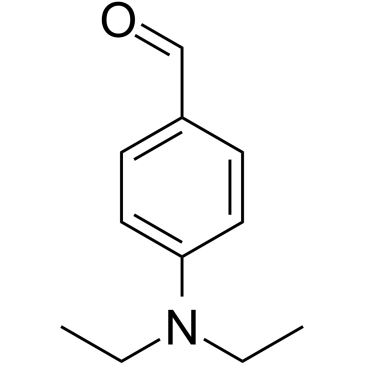
-
GC18359
4-Epianhydrochlortetracycline (hydrochloride)
4-Epianhydrochlortetracycline is a derivative of tetracycline .
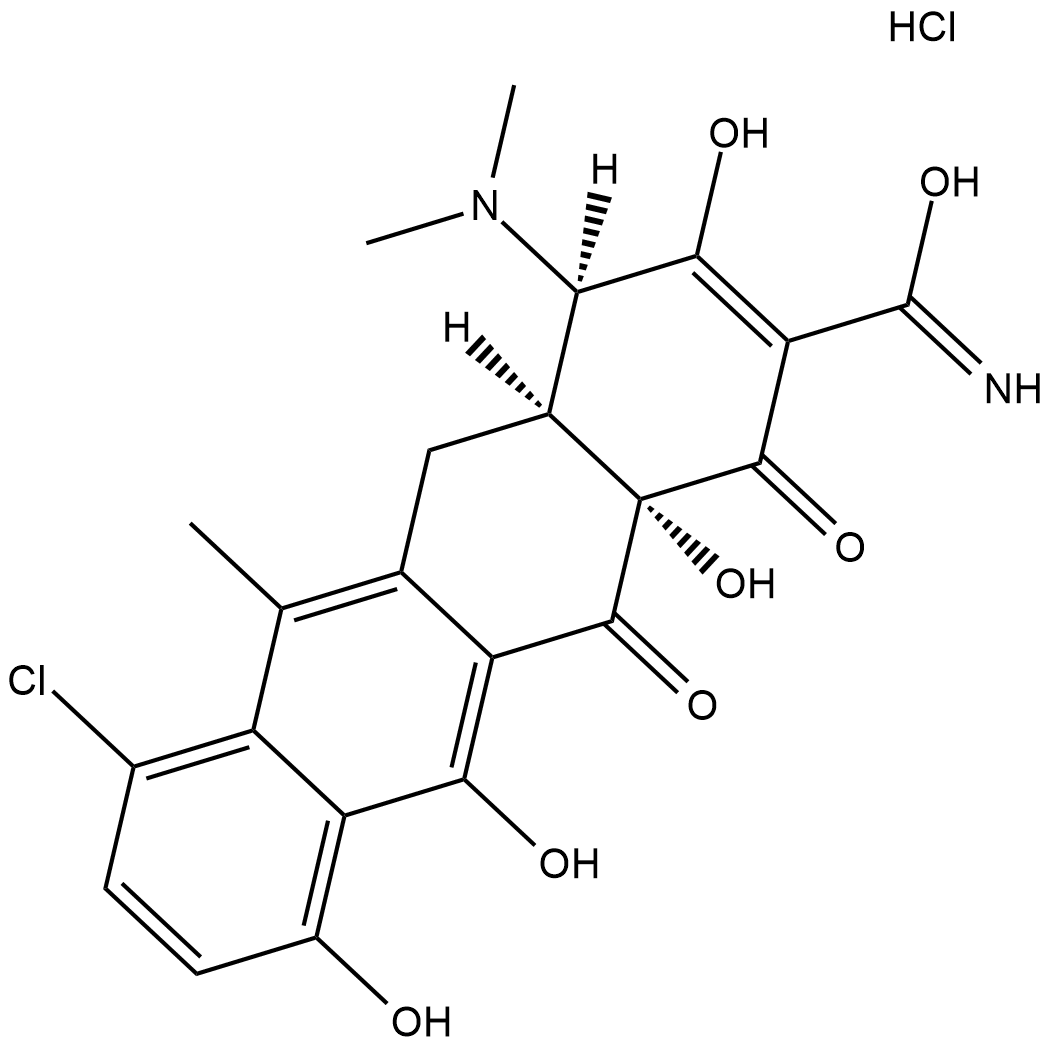
-
GC18194
4-Epidoxycycline
4-ED
4-Epidoxycycline is the 4-epimer hepatic metabolite of the antibiotic doxycycline .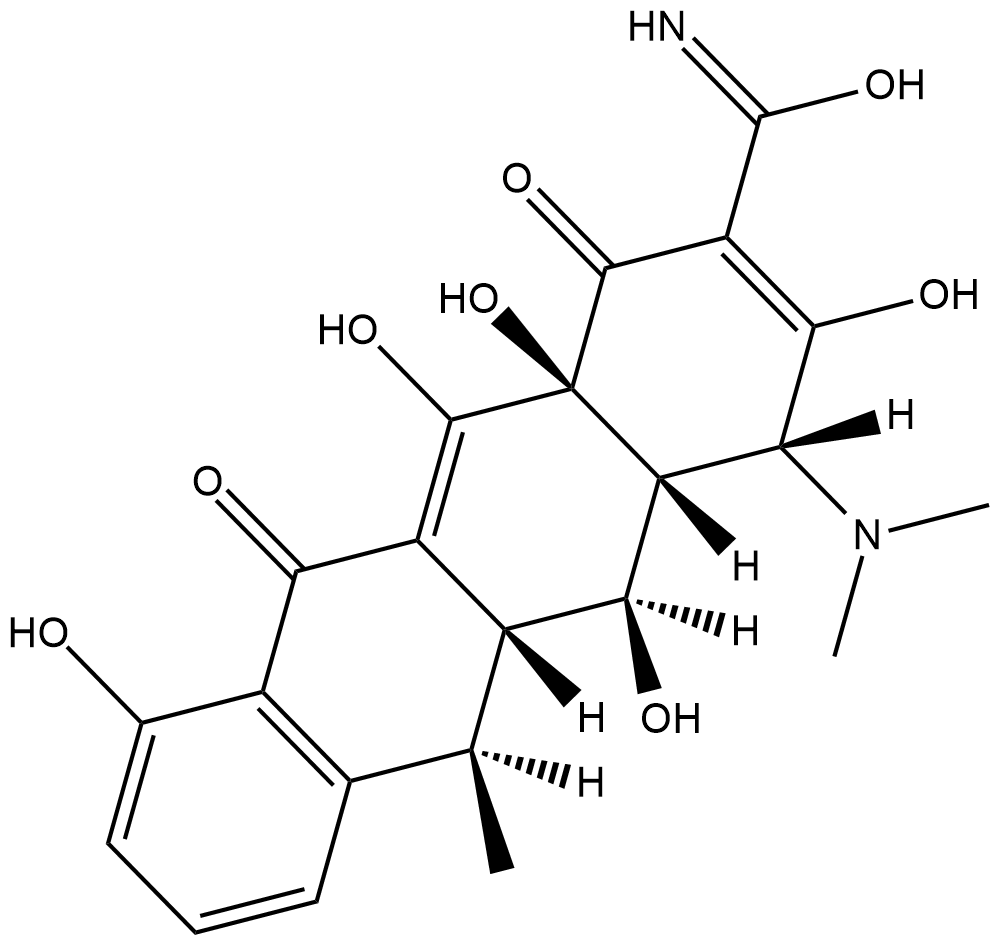
-
GC60514
4-Ethoxyphenol
Le 4-éthoxyphénol est un métabolite endogène.
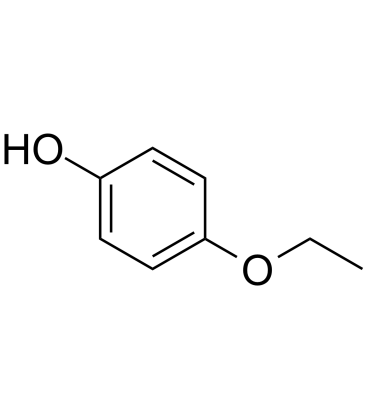
-
GC60515
4-Ethylbenzaldehyde
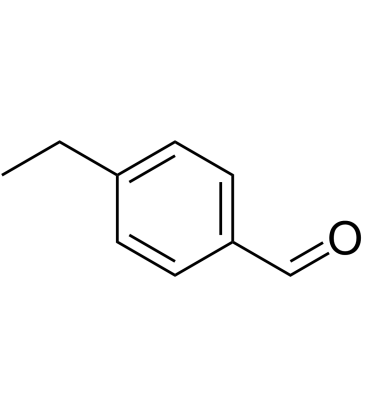
-
GC30600
4-Ethylphenol
Le 4-éthylphénol est un composé phénolique volatil associé À une mauvaise odeur dans le vin.
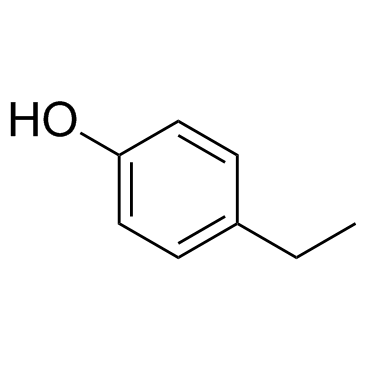
-
GC60516
4-Ethynyl-L-phenylalanine hydrochloride
4-Ethynyl-L-phenylalanine hydrochloride
Le chlorhydrate de 4-éthynyl-L-phénylalanine (chlorhydrate de 4-éthynyl-L-phénylalanine) est un inhibiteur puissant, sélectif, réversible et compétitif de la tryptophane hydroxylase (TPH), avec une Ki de 32,6 μM.
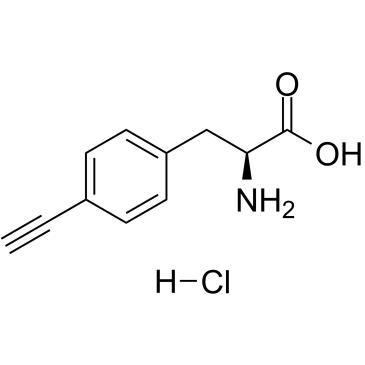
-
GC62803
4-Formylaminoantipyrine
La 4-formylaminoantipyrine est un métabolite excrété de l'aminophénazone.
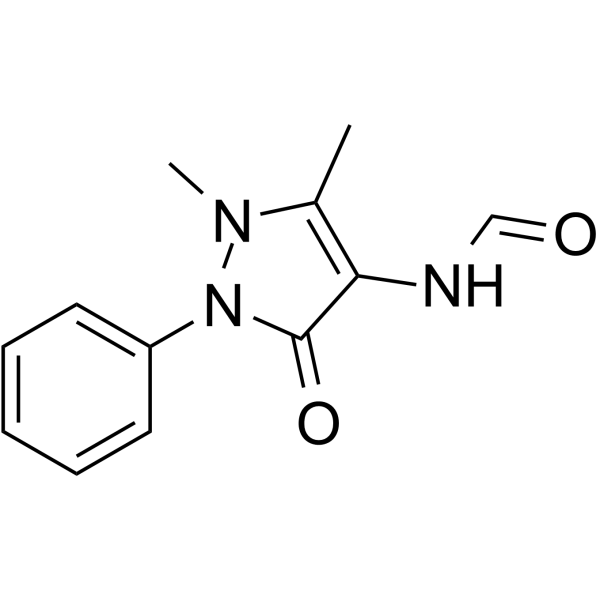
-
GC30630
4-Guanidinobutanoic acid
L'acide 4-guanidinobutanoÏque est un métabolite normal présent À de faibles concentrations.
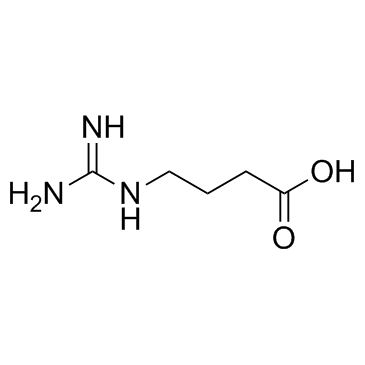
-
GC40097
4-HOBA
4-(Aminomethyl)phenol, 4-Hydroxybenzylamine, NSC 125720
Le 4-HOBA est un métabolite endogène.
-
GC42401
4-hydroperoxy Cyclophosphamide
4-OOH-CY
Un analogue activé de la cyclophosphamide.

-
GC42405
4-hydroxy Atorvastatin (calcium salt)
p-hydroxy Atorvastatin, para-hydroxy Atorvastatin
4-hydroxy Atorvastatin is a metabolite of atorvastatin, an HMG-CoA reductase inhibitor present in formulations that have been used to treat hypercholesterolemia and certain dyslipidemias.
-
GC18425
4-hydroxy Atorvastatin lactone
p-hydroxy Atorvastatin lactone, para-hydroxy Atorvastatin lactone
4-hydroxy Atorvastatin lactone is a metabolite of atorvastatin , an HMG-CoA reductase inhibitor present in formulations that have been used to treat hypercholesterolemia and certain dyslipidemias.
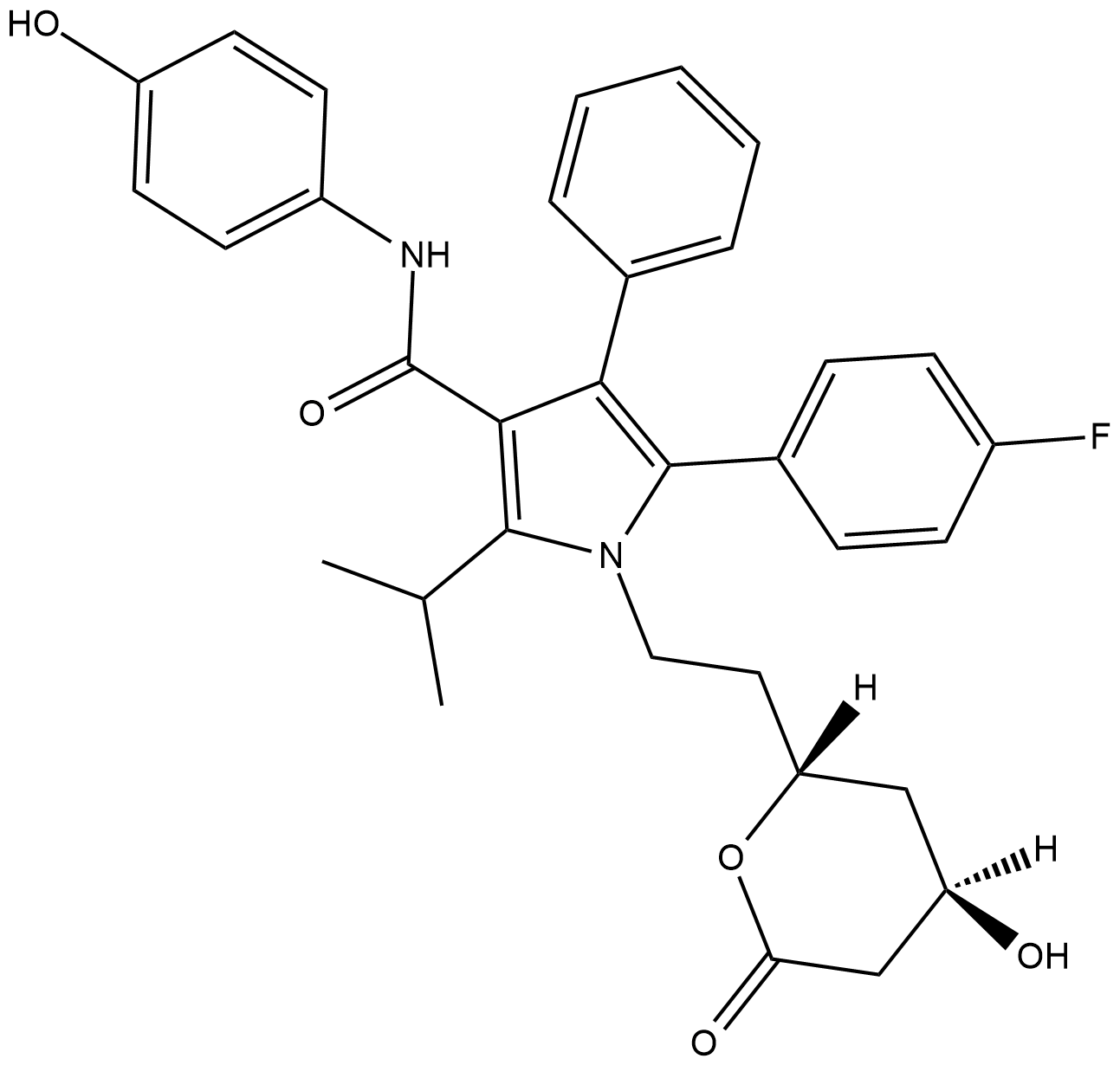
-
GC42407
4-hydroxy Diclofenac
Le 4-hydroxy diclofénac est un métabolite actif du diclofénac par voie orale par le cytochrome P450 2C9 (CYP2C9).
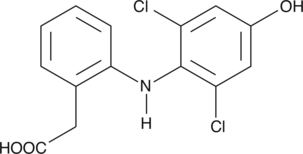
-
GC42410
4-hydroxy Nonenal
4-HNE
Un produit de peroxydation lipidique

-
GC49575
4-hydroxy Omeprazole sulfide
4-hydroxy OMEP sulfide, 4-hydroxy OMP sulfide, 4-hydroxy OMZ sulfide
A metabolite of omeprazole
-
GC40879
4-hydroxy Solifenacin N-oxide
4-hydroxy Solifenacin N-oxide is an N-oxide form of 4-hydroxy solifenacin, the major metabolite of solifenacin .

-
GC42415
4-hydroxy Valsartan
CGP 71580, Valeryl 4-hydroxy Valsartan
4-hydroxy Valsartan is a major metabolite of the angiotensin II type 1 (AT1) receptor antagonist valsartan.
-
GC18417
4-hydroxy Xylazine
p-hydroxy Xylazine, para-hydroxy Xylazine
4-hydroxy Xylazine est un métabolite de la xylazine.
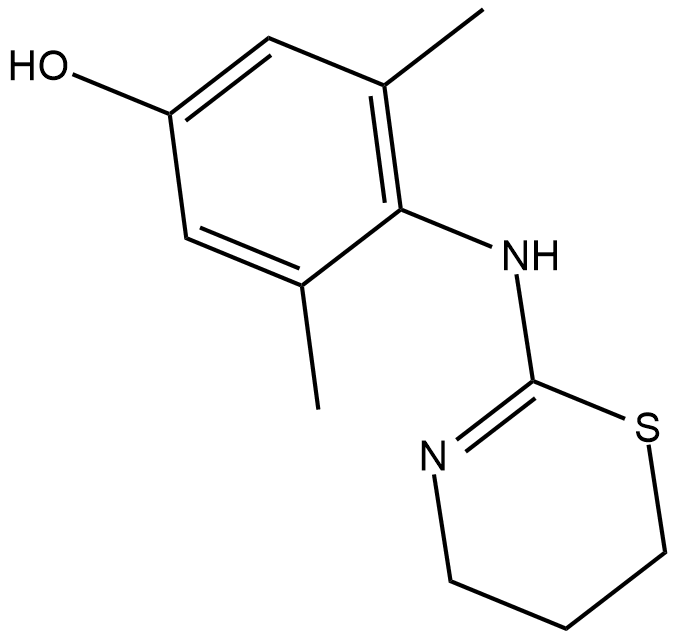
-
GC33656
4-Hydroxy-3-methylbenzoic acid
L'acide 4-hydroxy-3-méthylbenzoÏque est un acide organique normal identifié dans les échantillons d'urine d'une population en bonne santé.
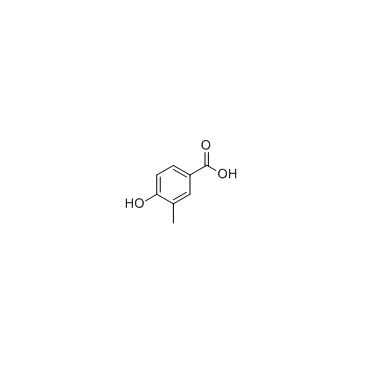
-
GC11270
4-Hydroxybenzoic acid
p-Hydroxybenzoic Acid, 4-Salicyclic Acid, p-Salicyclic Acid
L'acide 4-hydroxybenzoÏque, un dérivé phénolique de l'acide benzoÏque, pourrait inhiber la plupart des bactéries gram-positives et certaines bactéries gram-négatives, avec une IC50 de 160 μg/mL.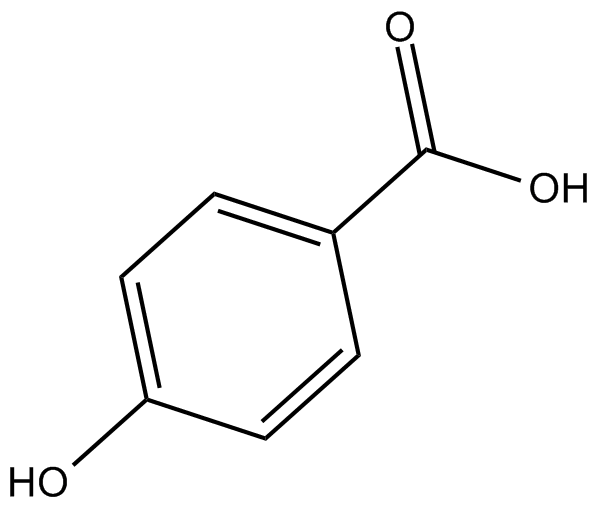
-
GC60518
4-Hydroxybenzyl cyanide
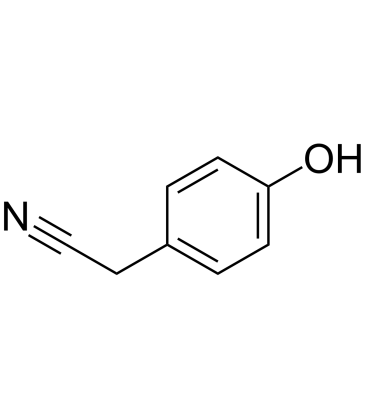
-
GC35131
4-Hydroxycoumarin
Benzotetronic Acid, 4-Coumarinol, NSC 11889
La 4-hydroxycoumarine, un dérivé de la coumarine, est l'un des échafaudages hétérocycliques les plus polyvalents et est fréquemment appliquée dans la synthèse de divers composés organiques.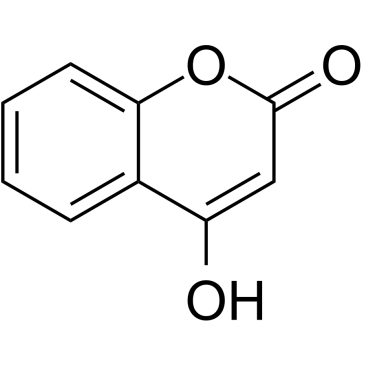
-
GC33610
4-Hydroxycyclohexanecarboxylic acid
L'acide 4-hydroxycyclohexanecarboxylique appartient À la classe des composés organiques connus sous le nom de cyclohexanols.
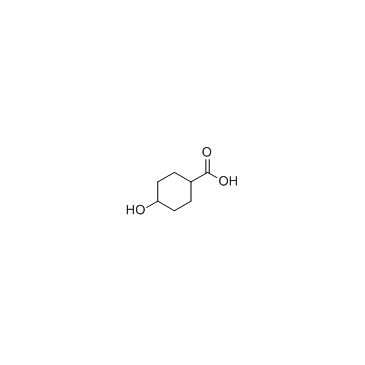
-
GC39691
4-Hydroxymethylpyrazole
Le 4-hydroxyméthylpyrazole est le principal métabolite du fomépizole.
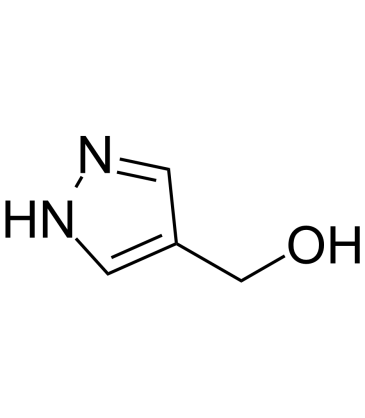
-
GC68055
4-Hydroxyphenyl acetate
4-HPA; 4-Acetoxyphenol

-
GC33815
4-Hydroxyphenylacetic acid
4-HPAA, p-HPAA, para-HPAA, p-Hydroxyphenylacetic Acid, para-Hydroxyphenylacetic Acid, NSC 25066, NSC 27460
L'acide 4-hydroxyphénylacétique, un métabolite majeur des polyphénols issu du microbiote, est impliqué dans l'action antioxydante.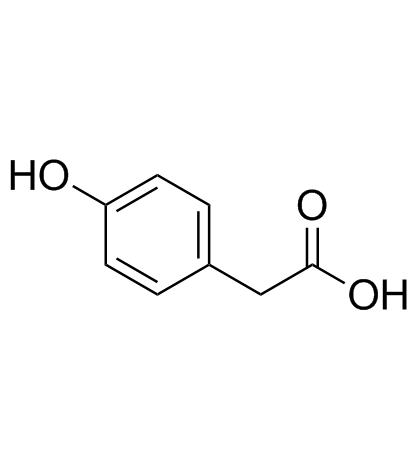
-
GC35134
4-Methoxybenzaldehyde
Le 4-méthoxybenzaldéhyde est un composé phénolique parfumé naturel.
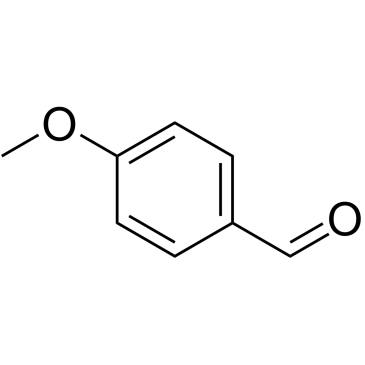
-
GC35135
4-Methoxycinnamic acid
L'acide 4-méthoxycinnamique est détecté comme phénylpropanoÏde naturel chez A.
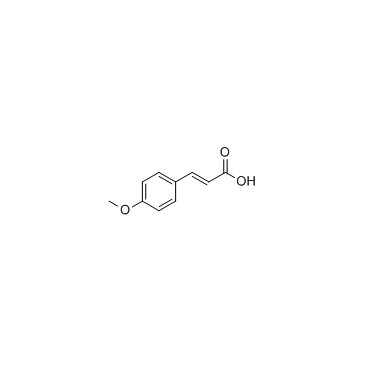
-
GC60521
4-Methyl-1-phenyl-2-pentanone
La 4-méthyl-1-phényl-2-pentanone est un métabolite endogène.
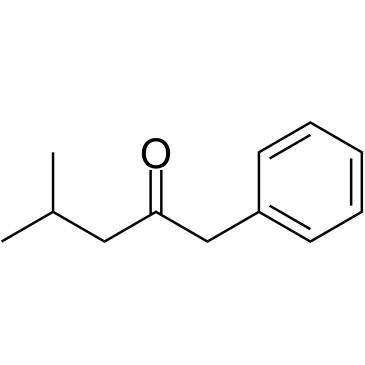
-
GC31307
4-Methyl-2-oxopentanoic acid
2-Ketoisocaproate, α-Ketoisocaproate, 2-Ketoisocapronic Acid, KIC, 4-MOP, 2-Oxoisocaproic Acid, 4-methyl-2-Oxopentanoate, 4-methyl-2-Oxovaleric Acid, 4-methyl-2-Oxovalerate
L'acide 4-méthyl-2-oxopentanoÏque (acide α-cétoisocaproÏque), un métabolite anormal, est À la fois une neurotoxine et une métabotoxine.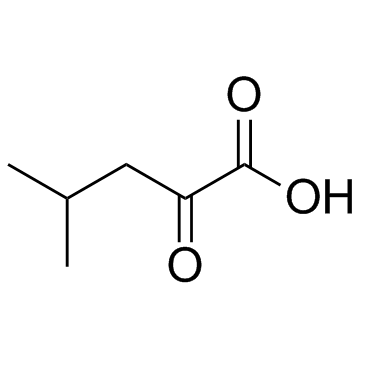
-
GC39307
4-Methylamino antipyrine
La 4-méthylamino antipyrine est un métabolite actif du métamizole.
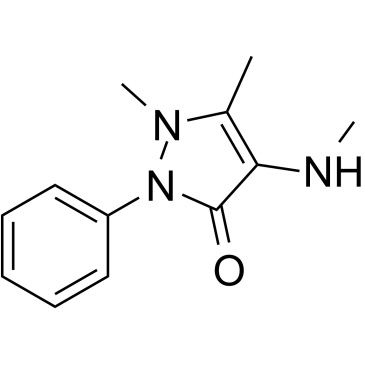
-
GC60523
4-Methylamino antipyrine hydrochloride
Metamizole Impurity C
Le chlorhydrate de 4-méthylamino antipyrine est un métabolite actif du métamizole.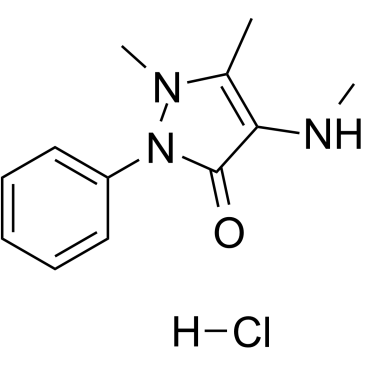
-
GC39780
4-Methylbiphenyl
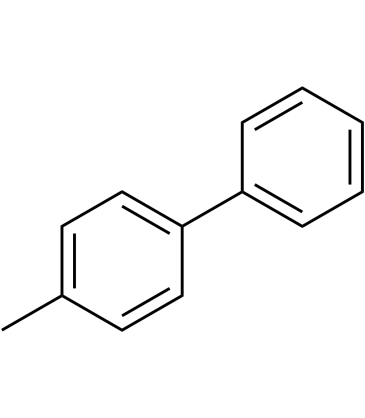
-
GC30658
4-Methylcatechol
Le 4-méthylcatéchol, un métabolite du p-toluate, est un substrat ainsi qu'un inhibiteur suicide de la catéchol 2,3-dioxygénase.
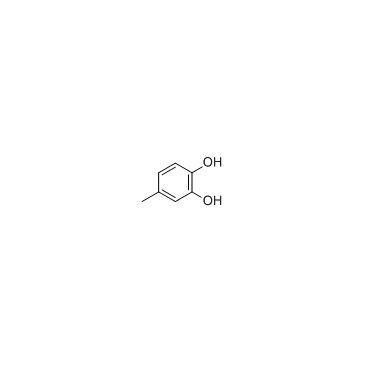
-
GC35139
4-Methylesculetin
La 4-méthylesculétine est un dérivé de coumarine naturel actif par voie orale, avec de puissantes activités anti-oxydantes et anti-inflammatoires.
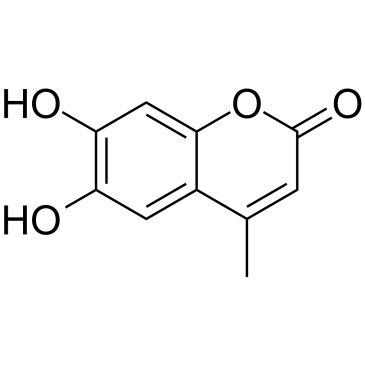
-
GC64621
4-Nitrocatechol
Le 4-nitrocatéchol est un puissant inhibiteur de la lipoxygénase.
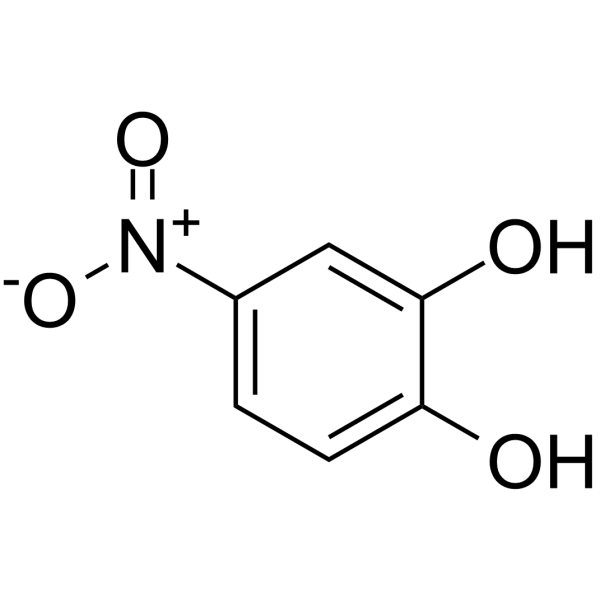
-
GC49127
4-oxo Cyclophosphamide
4-keto CP, 4-keto Cyclophosphamide, NSC 139488, 4-oxo CP
An inactive metabolite of cyclophosphamide
-
GC60524
4-Pentenoic acid
L'acide 4-penténoÏque est un métabolite endogène.
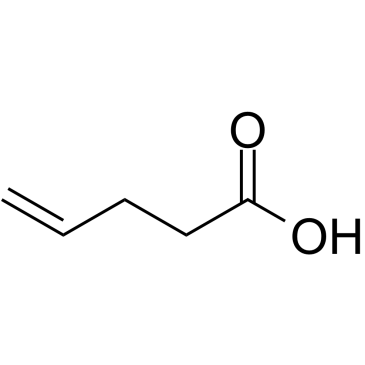
-
GC30670
4-Pyridoxic acid
NSC 41814
L'acide 4-pyridoxique est un produit catabolique de la vitamine B6 qui est excrété dans l'urine.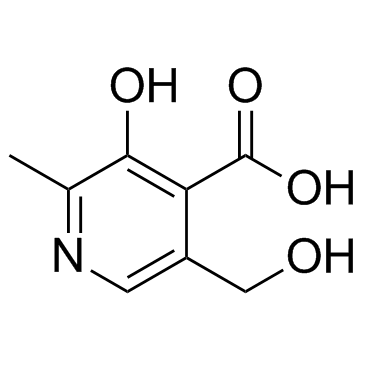
-
GC60525
4-Vinylphenol (10%w/w in propylene glycol)
Le 4-vinylphénol se trouve dans l'herbe médicinale Hedyotis diffusa Willd, le riz sauvage et est également le métabolite de l'acide p-coumarique et férulique par les bactéries lactiques du vin. Le 4-vinylphénol induit l'apoptose et inhibe la formation de vaisseaux sanguins et supprime la croissance invasive des tumeurs mammaires in vivo.
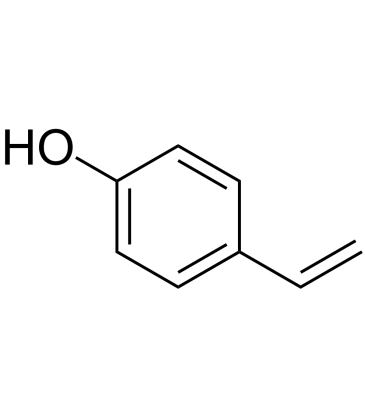
-
GC35126
4-Hydroxyphenylpyruvic acid
L'acide 4-hydroxyphénylpyruvique est un intermédiaire dans le métabolisme de l'acide aminé phénylalanine.
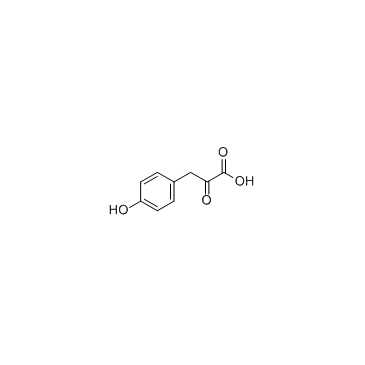
-
GC60531
5α-Cholestan-3-one
5α-Cholestan-3-one est un métabolite endogène.
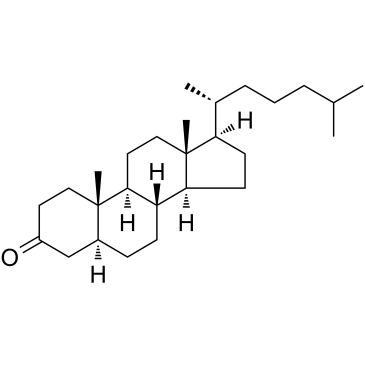
-
GC41399
5α-dihydro Levonorgestrel
5α-DHLNG
5α-dihydro Levonorgestrel is a metabolite of the synthetic progestin levonorgestrel.
-
GC30669
5α-Cholestan-3β-ol (5α-Cholestanol)
β-Cholestanol, (+)-Dihydrocholesterol, NSC 18188
5α-Cholestan-3β-ol (5α-Cholestanol) est un composé stéroÏde dérivé.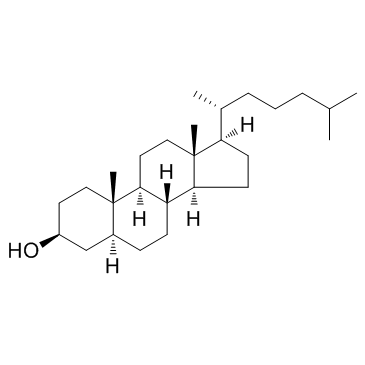
-
GC38358
5'-Cytidylic acid
CMP, 5′-CMP, Cytidine 5′-phosphate
5'-acide cytidylique (5'-acide cytidylique) est un nucléotide qui est utilisé comme monomère dans l'ARN.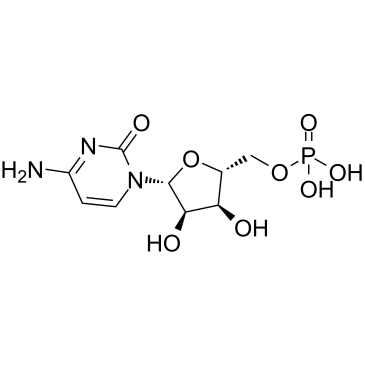
-
GC33636
5'-Deoxyadenosine
La 5'-désoxyadénosine est un nucléoside oxydé présent dans l'urine de sujets normaux.
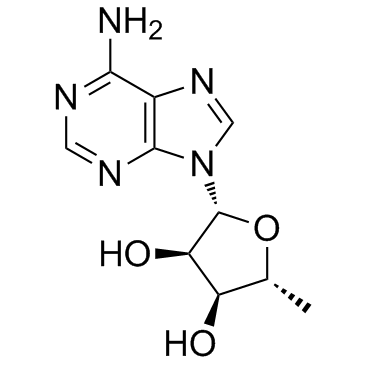
-
GC35157
5'-GTP trisodium salt
Le sel trisodique de 5'-GTP (5'-sel trisodique de GTP) est un activateur des protéines G transductrices de signaux qui sont impliquées dans divers processus cellulaires, notamment la prolifération, la différenciation et l'activation de plusieurs cascades de kinases intracellulaires.
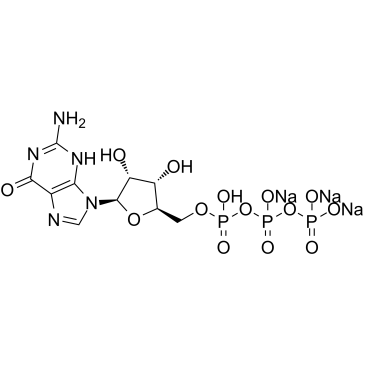
-
GC35159
5'-Guanylic acid disodium salt
Le sel disodique de l'acide 5'-guanylique (sel disodique 5'-GMP) est composé de fragments guanine, ribose et phosphate et c'est un monomère nucléotidique dans l'ARN messager.
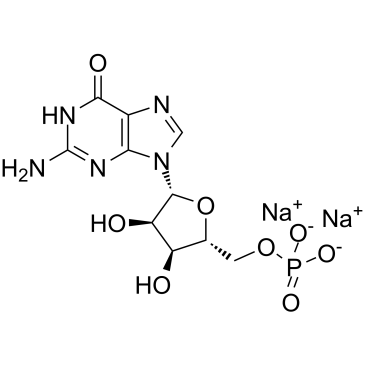
-
GC18582
5'-hydroxy Meloxicam
A metabolite of meloxicam
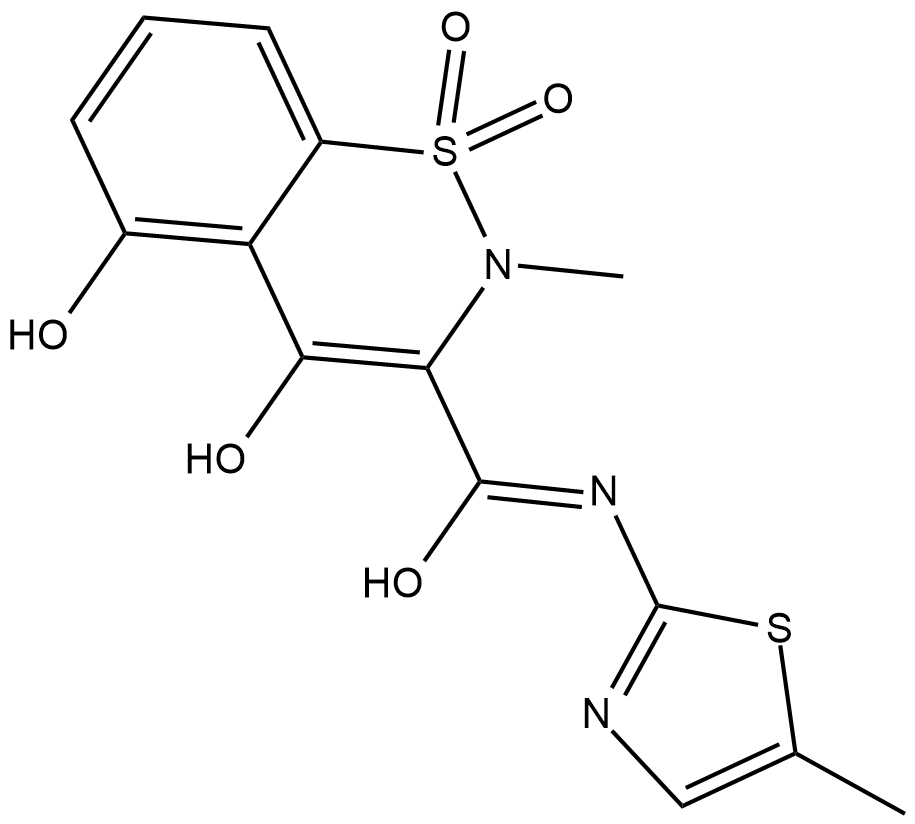
-
GC40459
5(R)-HETE
5(R)-Hydroxyeicosatetraenoic Acid
5(R)-HETE is a rare lipoxygenase product of arachidonic acid.
-
GC41126
5(S),12(S)-DiHETE
5(S),12(S)-DiHETE is a natural bioactive lipid derived from arachidonic acid.
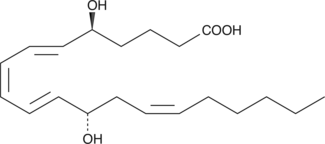
-
GC41127
5(S),15(S)-DiHETE
Le 5(S),15(S)-DiHETE est un intermédiaire « activé », inhibe l'agrégation plaquettaire avec une IC50 de 1,3 μM.
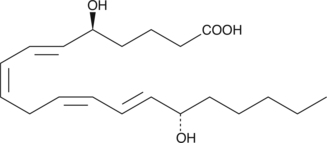
-
GC41128
5(S),6(R)-11-trans DiHETE
5(S),6(R)-11-trans DiHETE is a C-11 double bond isomer of 5(S),6(R)-DiHETE that is formed by the enzymatic isomerization of 5(S),6(R)-DiHETE by a membrane bound factor.

-
GC41129
5(S),6(R)-DiHETE
5(S),6(R)-DiHETE is a dihydroxy polyunsaturated fatty acid and a nonenzymatic hydrolysis product of leukotriene A4 (LTA4).

-
GC41131
5(S),6(S)-DiHETE
5(S),6(S)-DiHETE is one of the four diastereomeric 5,6-dihydroxy acids produced from the non-enzymatic hydrolysis of LTA4.



